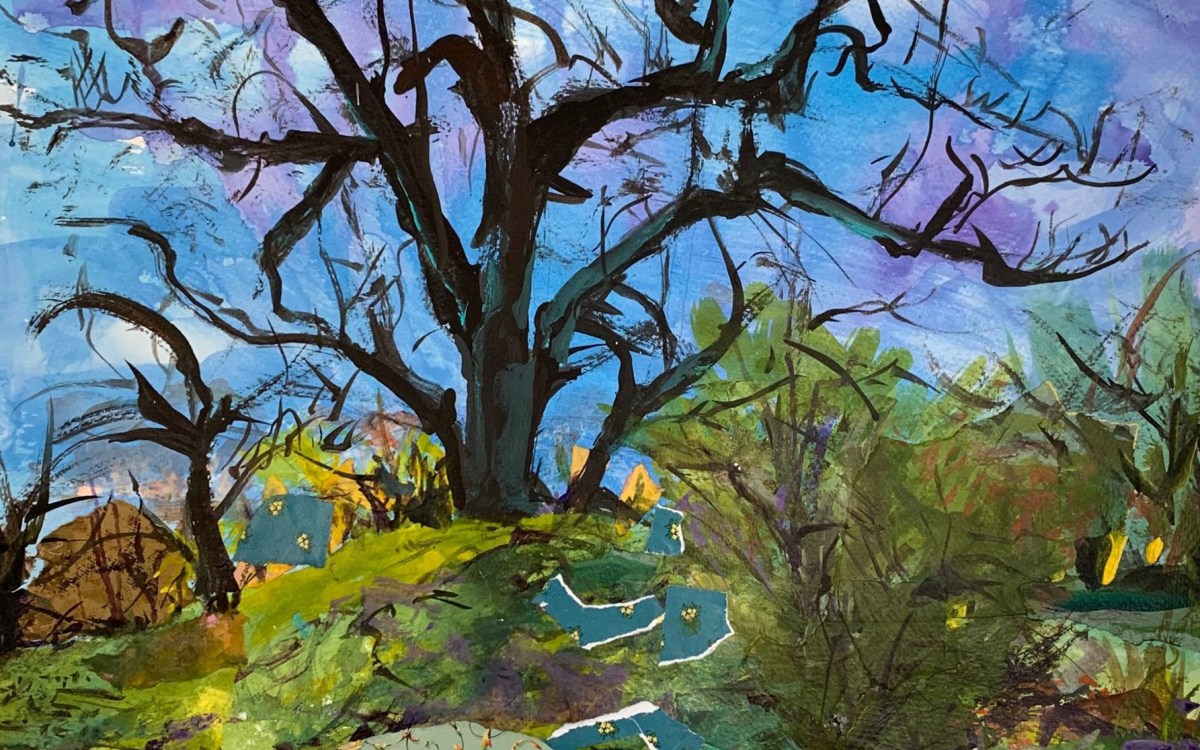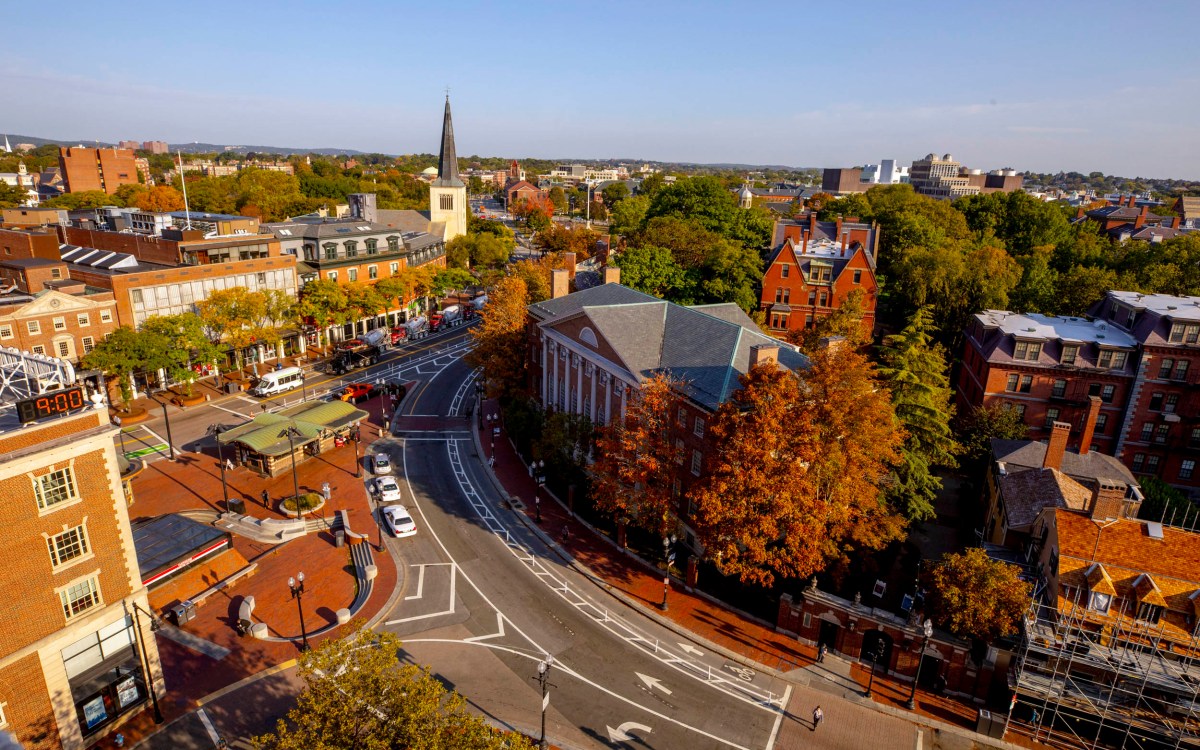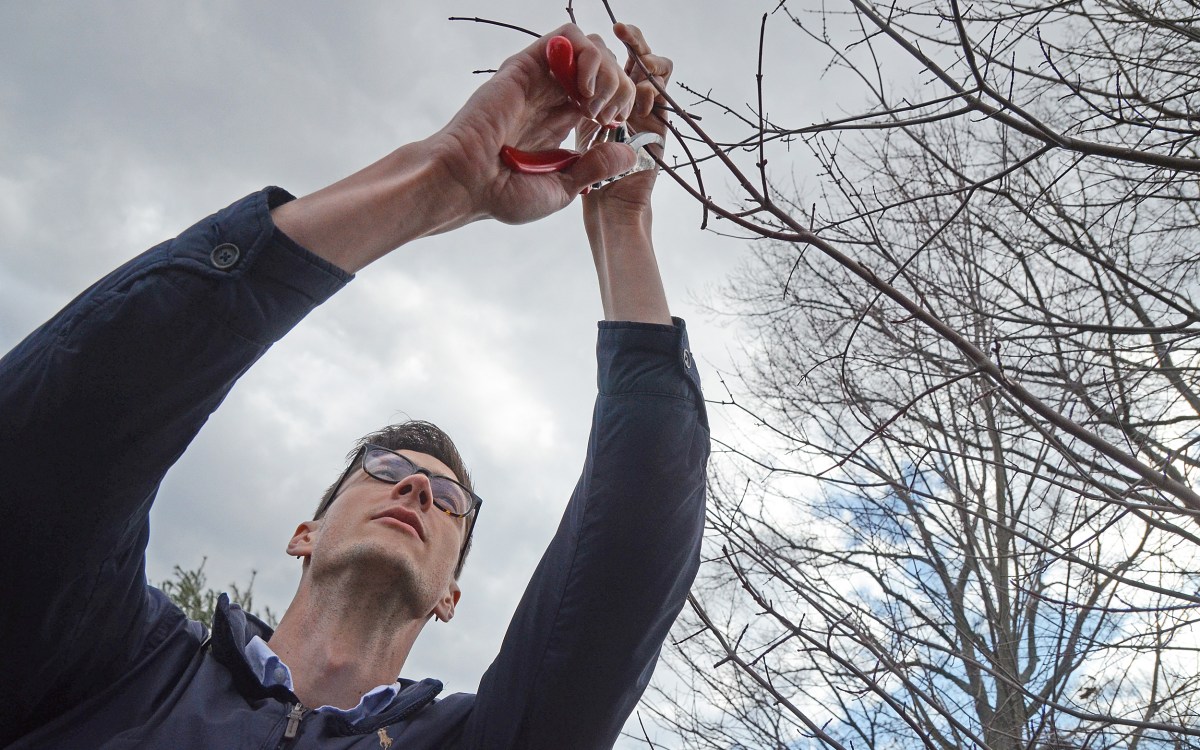How does your garden grow?
Arboretum administration and staff discuss huge visitor numbers and what’s staying post-pandemic
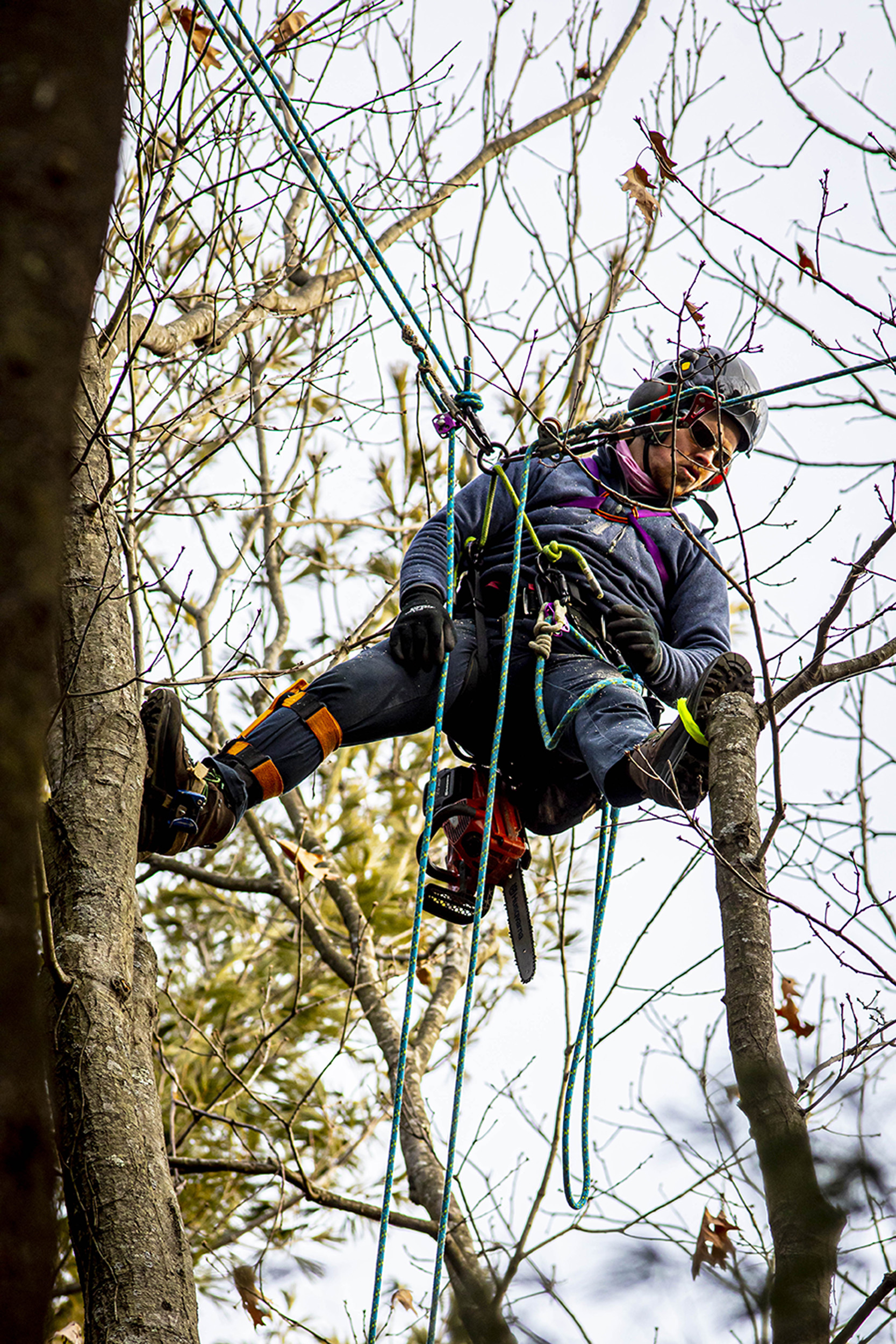
Arborist AJ Tataronis, with his chainsaw hanging from his belt, does general cleanup in the canopy that borders one of the paths at the Arnold Arboretum.
Photos by Rose Lincoln/Harvard Staff Photographer
Arnold Arboretum has been a place for Bostonians to find refuge from crowded city life for nearly 150 years, and during the pandemic it offered safe respite to waves of visitors grown weary of the isolation of home.
In fact, an estimated 2-3 million people visited the Arboretum just since the end of March, according to officials. While many outdoor spaces temporarily closed due to coronavirus, this outdoor museum of trees and Frederick Law Olmsted-designed landscape remained open to the public. In addition to the rise in in-person guests, the Arboretum has also drawn a larger audience for its remote programming.
Arboretum Director William “Ned” Friedman, who also serves at the Arnold Professor of Organismic and Evolutionary Biology, worked with colleagues at the Harvard T.H. Chan School for Public Health early on in the pandemic to maintain proper protocol, like mask wearing and social distancing, to ensure the safety of staff and visitors alike.
“The Arboretum is one of the very few botanical gardens that has remained open throughout the pandemic,” Friedman said. “People are so cooped up. You don’t have anywhere you really can go and feel totally safe and relaxed. Interestingly, these venerable old institutions like the Arboretum that the public often takes for granted turned out to be the one place where you could get a sense of renewal in troubled times.”
“Right now, we’re working to analyze demographic data to help us understand the different audiences who come through our 13 different gates” Friedman said. “We want to understand where people are coming from and make sure we are directing our attention and staff to developing programming that ensures that everyone feels truly welcome.”
Horticulturalist Laura Mele piles some freshly cut limbs at the Arnold Arboretum.
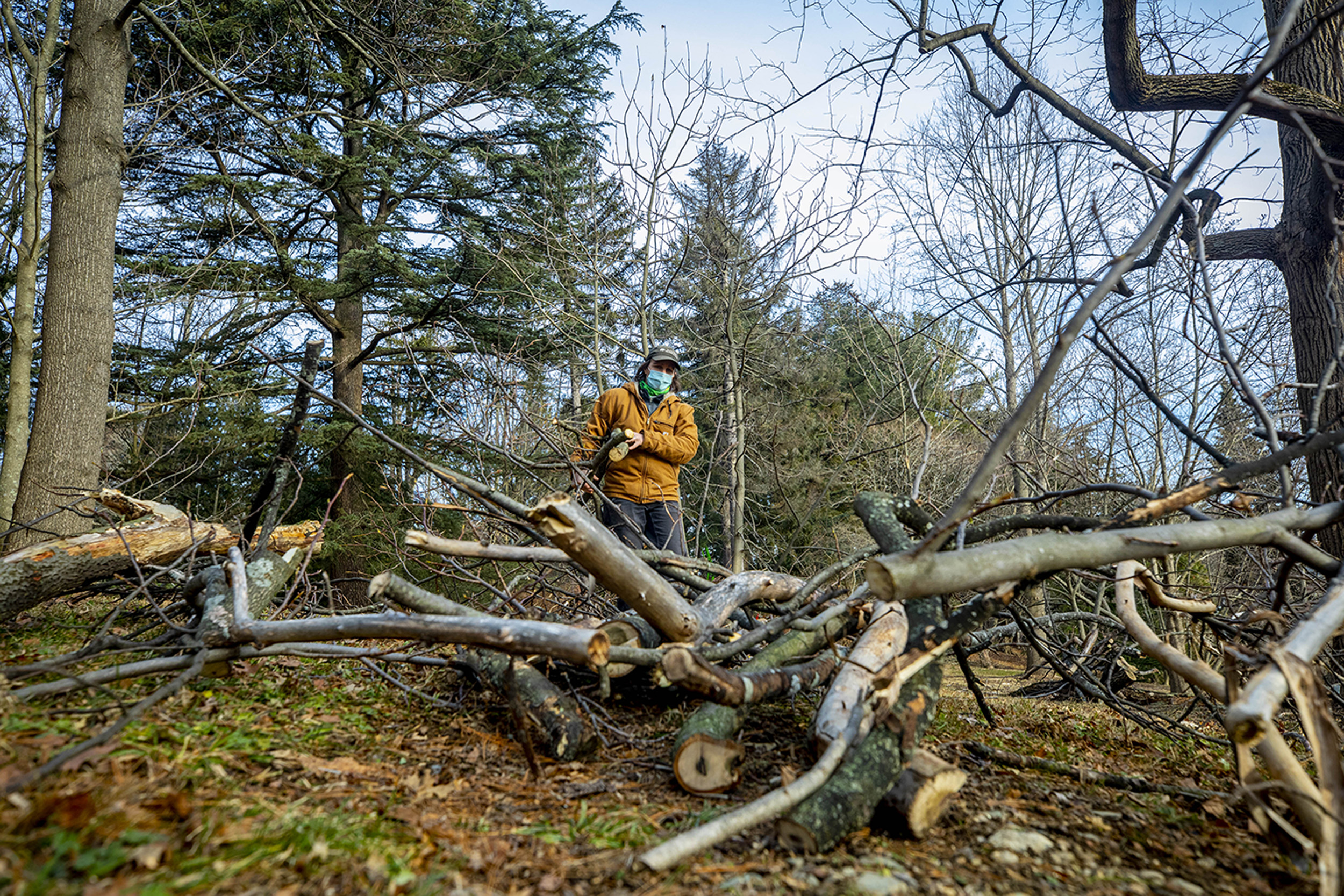
“We’re working with demographic data to track how people come through different gates [but] the spitball numbers are phenomenal,” Friedman said. “We want to understand where people are coming from and make sure we are directing our attention and providing programming so that everyone feels invited.”
At the beginning of the pandemic, the Arboretum’s on-site staff was reduced from 20 full-time members to two to four per day, while remaining employees worked remotely from home. The full staff returned to the grounds in the summer when operations were expanded, but with shifts adjusted to minimize overlap.
Arboretum horticulturist Laura Mele is one of the staff members responsible for managing the care of plants in her assigned zone on Peters Hill, including pruning, mulching, pest management, and maintaining plant health. Though she said her responsibilities have largely remained the same during the pandemic, it has been a difficult adjustment to work separately from her teammates.
“I am grateful that I am able to work every day in a safe manner [but] it has been hard to be at work with people without actually being at work with them,” Mele said. “I can go many days without seeing some co-workers, and even then, it’s a wave from afar. Pre-pandemic, the amount of comradery and team-building at the Arboretum was very palpable and one of my favorite things about the job.”
Horticulturist Brendan Keegan said it’s been “increasingly difficult to remember what work was like prior to the pandemic,” but he has found great value in the influx of new visitors.
Rachel Lawlor carries an armload of cuttings.
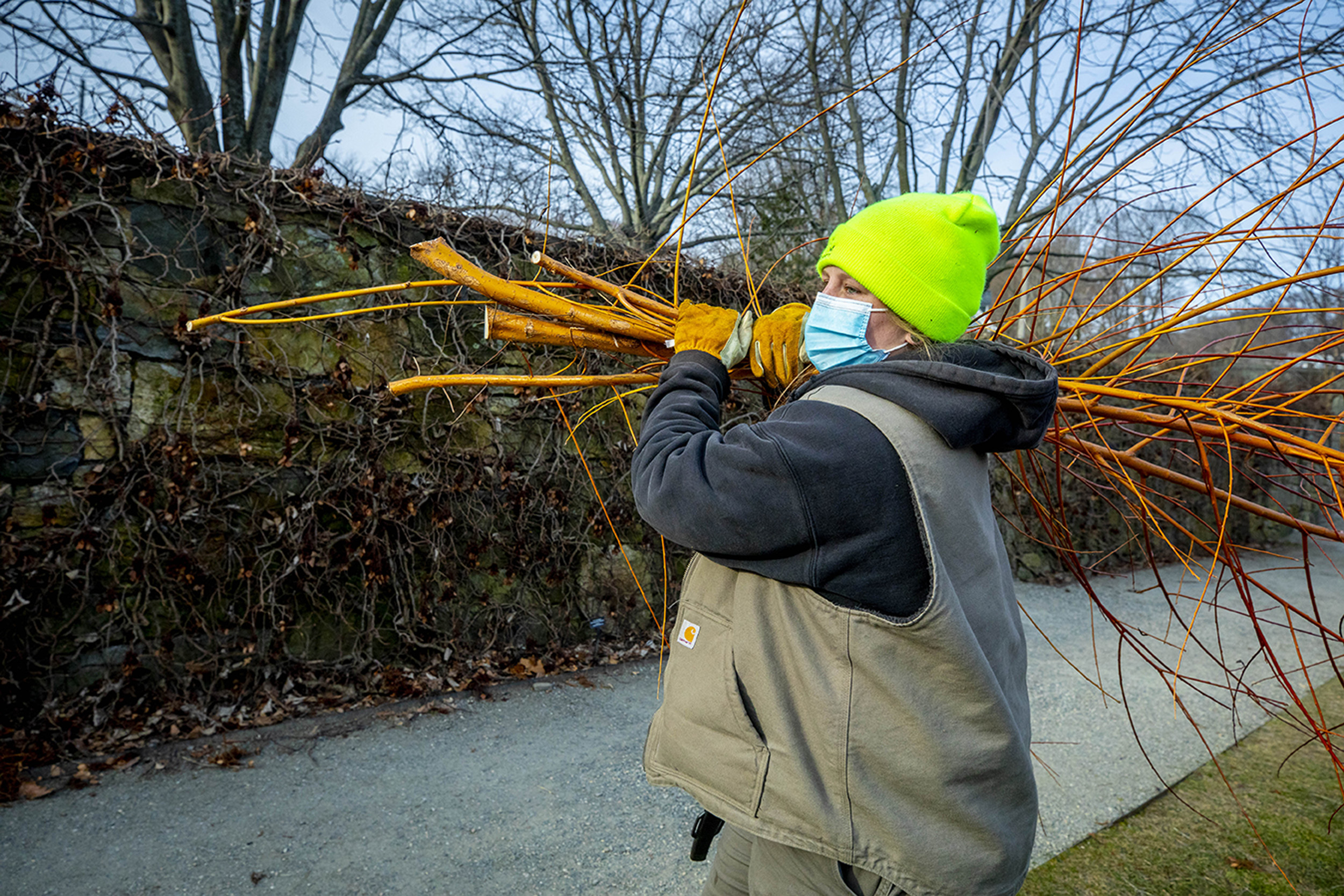
“The pandemic highlighted how much I underestimated the value of public urban green space to our visitors,” Keegan said. “Especially during the early stages of the lockdown, when many other parks and outdoor areas were closed, you could tell that people were driving in from around the city just for an opportunity to get outside.”
Being in contact with nature provides many physical and mental health benefits. In an April 2020 Washington Post op-ed written by Friedman, Professor of Epidemiology Marc Lipsitch, and Associate Professor of Exposure Assessment Science Joseph Allen, the three discussed positive effects such as decreased negative thoughts, reduced symptoms of ADD and ADHD in children, decreased stress, and reduced mental fatigue.
“There are real, tangible, measurable benefits of spending modest amounts of time in the natural world,” Friedman said. “Access to nature is a human right, especially in cities. It’s about your personal well-being.”
Friedman said the Arboretum is also looking to keep some of the programs developed during the past year. Before, most of its programming took place in classrooms or in person and on-site, but online webinars have allowed thousands more people to access the events.
“We’re thinking about how to take what we’ve learned from the pandemic and advance our digital communications strategy so that we can reach everyone around the world,” Friedman said.
Keegan said he has also enjoyed connecting with a more international audience through these virtual events.
“It’s funny to think that in the past these types of presentations primarily attracted a few dozen people from surrounding neighborhoods,” he said. “Now that they are remote, the exact same topic today might draw in hundreds of attendees, including people not just from different neighborhoods but from different countries as well.”
The Arboretum is now planning for a new mobile visitor center, which will include books, digital monitors, and maps, all manned by staff.
“The old model for a visitor center was you come to us, and the new model is that we’re going to come to you,” Friedman said. “We are going to be rotating our mobile visitor center to each of our gates and adjacent neighborhoods to meet many more of our neighbors and help them deepen their relationship with the Arboretum and derive more benefits from their experience.”



